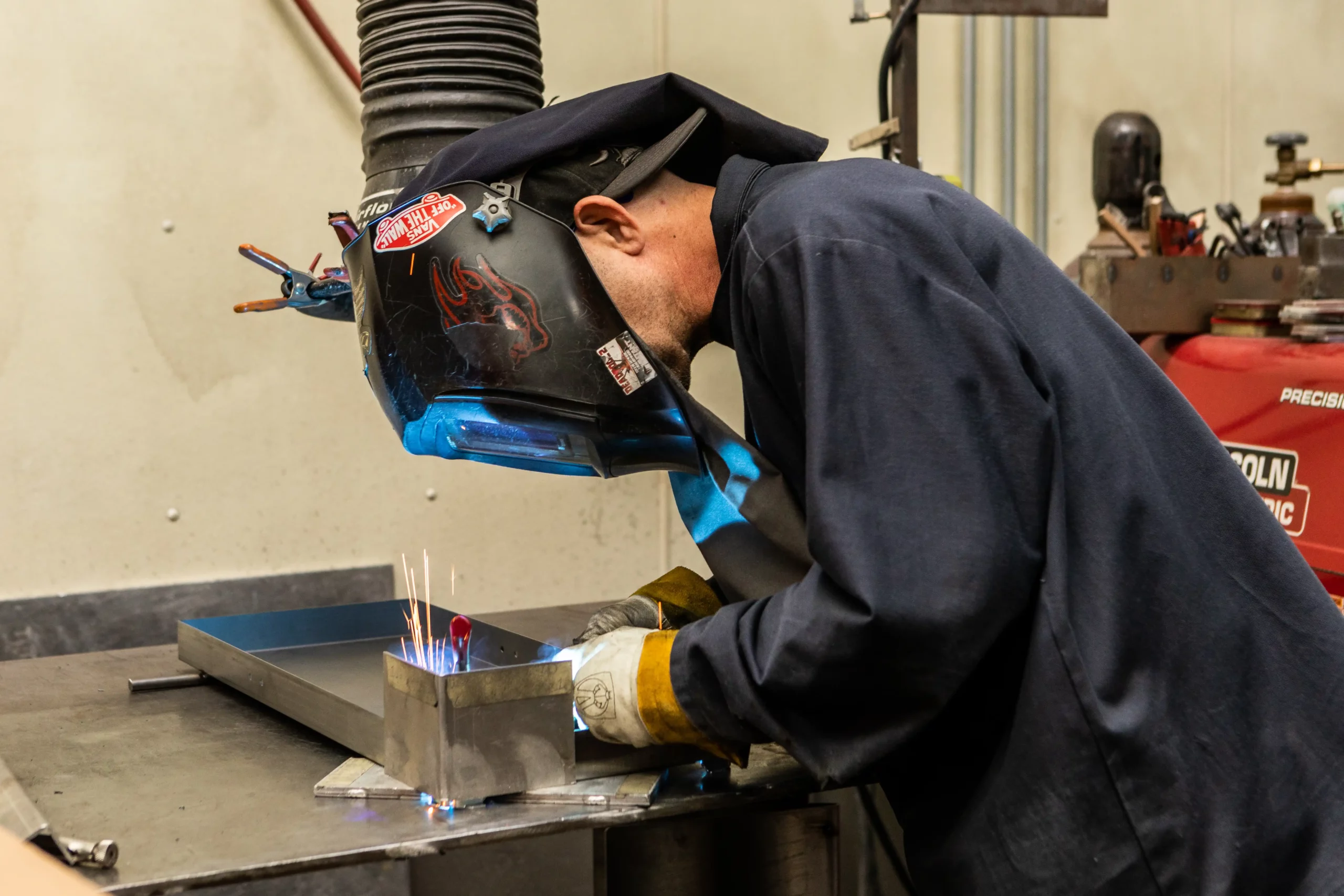Why a Welding WPS is Crucial: Enhancing Uniformity and Conformity
Why a Welding WPS is Crucial: Enhancing Uniformity and Conformity
Blog Article
Getting Welding Quality: Revealing the Keys of WPS Application and Optimization
In the realm of welding, accomplishing excellence is a pursuit that pivots on the thorough implementation and optimization of Welding Procedure Requirements (WPS) By diving into the essential elements, techniques, obstacles, and finest practices associated with WPS, a world of welding quality waits for those who are prepared to discover its midsts.
Value of WPS in Welding
The Importance of Welding Treatment Specs (WPS) in the welding industry can not be overemphasized, serving as the backbone for guaranteeing consistency, top quality, and security in welding operations. A WPS provides comprehensive instructions on exactly how welding is to be accomplished, consisting of important variables such as products, welding processes, joint design, filler metals, preheat and interpass temperature levels, welding currents, voltages, travel rates, and more. By adhering to a distinct WPS, welders can keep uniformity in their job, leading to constant weld top quality across various projects.

Trick Components of WPS
Discussing the integral elements of a welding procedure requirements (WPS) is necessary for comprehending its function in welding operations. One important aspect of a WPS is the welding process specification, which describes the specific welding processes to be utilized, such as gas tungsten arc welding (GTAW) or secured metal arc welding (SMAW) By integrating these crucial elements right into the WPS, welding procedures can be standard, ensuring quality, efficiency, and safety in welding operations.
Techniques for WPS Optimization

Secondly, training and certification of welding employees according to the specific demands of the WPS is paramount. Offering thorough training programs and ensuring that welders are accredited to execute treatments detailed in the WPS can bring about better welds and reduced rework.
Furthermore, leveraging modern technology such as welding software and monitoring systems can help in enhancing WPS. These tools can help in monitoring variables, making sure specifications are within defined restrictions, and providing real-time responses to welders, allowing them to make prompt adjustments for enhanced weld top quality.
Common Challenges and Solutions
Encountering challenges in executing the strategies for WPS optimization can prevent welding procedures' efficiency and quality. One common difficulty is inadequate training or understanding of the welding treatment requirements (WPS) among the welding group. This can bring about improper execution of welds, resulting in issues and rework. To resolve this, detailed training programs need to be applied to make sure that all welders are skillful in translating and using WPS precisely.
Another obstacle is the lack of correct documents and record-keeping, which is crucial for WPS optimization. Without clear records of welding parameters, products used, and inspection results, it becomes tough to identify areas for enhancement and make certain uniformity in welding procedures. Carrying out a robust documentation system, such as electronic welding monitoring software application, can assist streamline record-keeping and facilitate data analysis for continuous improvement.
In addition, irregular welding equipment calibration and upkeep can present a see substantial challenge to WPS optimization. Regular tools checks, calibration, and upkeep schedules ought to be abided by purely to make certain that welding parameters are accurately controlled and kept within the defined tolerances (welding WPS). By attending to these common challenges with proactive solutions, welding operations can enhance effectiveness, high quality, and general welding quality
Finest Practices for WPS Execution
To ensure successful WPS execution in welding operations, adherence to industry standards and precise attention to information are vital. When initiating WPS execution, it is crucial to begin by extensively comprehending the specific welding requirements of the task. This involves a detailed review of official source the welding treatment specs, products to be bonded, and the ecological conditions in which the welding will occur.
When the requirements are clear, the following action is to select the appropriate welding procedure that straightens with these specs. This includes consulting the pertinent codes and standards, such as those offered by the American Welding Society (AWS) or the International Organization for Standardization (ISO), to make certain compliance and top quality.
Additionally, recording the whole WPS application procedure is essential for traceability and quality assurance. Comprehensive documents should be kept relating to welding criteria, product preparation, preheat and interpass temperatures, welding consumables made use of, and any type of inconsistencies from the initial procedure. Normal audits and reviews of the WPS can help identify locations for improvement and guarantee ongoing optimization of the welding process.


Final Thought
To conclude, the implementation and optimization of Welding Procedure Specs (WPS) is important for achieving welding excellence. By recognizing the vital components of WPS, applying reliable techniques for optimization, resolving common obstacles, and complying with ideal practices, welders can ensure high-quality welds and risk-free working conditions. It is imperative for experts in the welding market to prioritize the proper implementation of WPS to enhance overall welding efficiency and attain wanted results.
The Importance of Welding Treatment Specifications (WPS) in the welding sector can not be overemphasized, offering as the foundation for making sure uniformity, top quality, and security in welding operations. A WPS provides comprehensive guidelines on exactly how welding is to be lugged out, including necessary variables such as materials, welding processes, joint design, filler metals, interpass and preheat temperatures, welding currents, voltages, travel speeds, and a lot more. One important aspect of a WPS is the welding procedure specification, which outlines the certain welding procedures additional reading to be used, such as gas tungsten arc welding (GTAW) or shielded steel arc welding (SMAW) By incorporating these crucial elements right into the WPS, welding procedures can be standard, making sure top quality, efficiency, and security in welding operations.
It is essential for specialists in the welding industry to prioritize the proper implementation of WPS to improve total welding efficiency and accomplish preferred outcomes.
Report this page